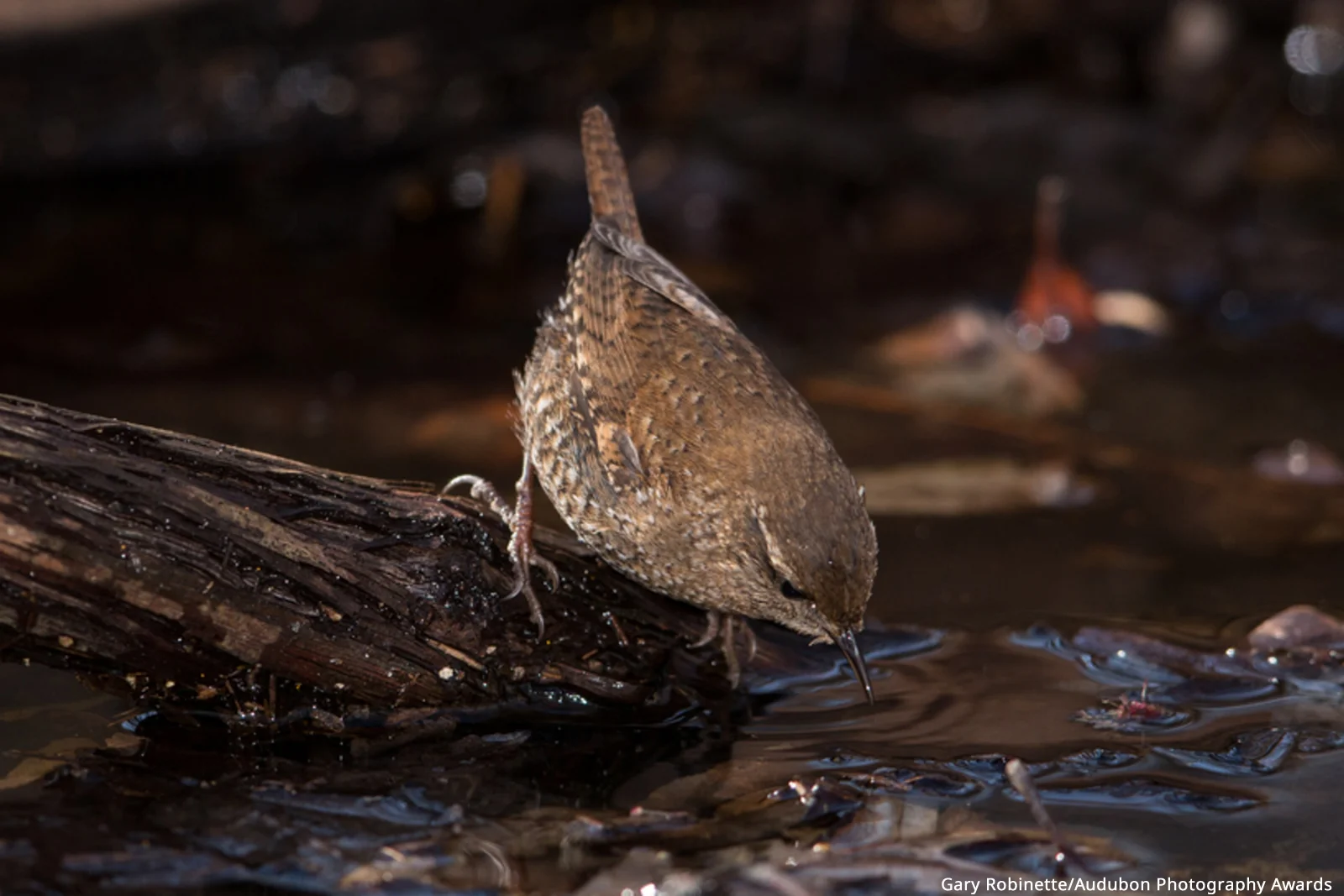A mouse scurries over the top of your backyard woodpile or stone wall during a crisp autumn day. But with a second glance you realize that the tiny creature is not a rodent at all, but a tiny dark brown bird.
Caroline Samson/American Photography Awards
The Winter Wren (Troglodytes hiemalis) is a peanut of a bird that can be found throughout the temperate regions of the Northern Hemisphere: Canada, the northern and mountainous areas of the United States, as well as Europe and Asia. It breeds in damp forested areas, especially among conifers. Fallen trees and slash piles provide the perfect habitat for this wren that prefers to build its moss-lined nest in the exposed soil of upturned tree roots. It has been noted that even after observing a Winter Wren leave its well-hidden nest, an observer finds it impossible to locate the nest’s entrance. Tangles of fallen branches and woody debris also provide safe, secretive feeding sites, while the uppermost branches serve as visible perches on which the wren can sing its high-pitched trilling, chattering song.
The Winter Wren breeds in Connecticut, but most commonly in the northwest corner of the state where mature forests (with plenty of fallen trees) are present. We are more likely to see this species during migration as it travels through our area on its way to more southerly states. An inch-and-a-half shorter than the rusty brown Carolina Wren, and almost a full inch shorter than the dull brown House Wren, the Winter Wren is dark brown with darker barring on its belly. Its small round body ends in a short, upturned tail, which leaves no doubt that it is a wren. Mouselike movements over ground and low vegetation leave no doubt that it is a winter wren.
Andy Reago & Chrissy McClarren CC BY 2.0
A drop in nighttime temperatures will bring Winter Wren together to roost for the shared body warmth. In the United States are reports of as many as 31 winter wrens huddled together in a nest box for the night. In Britain, 46 were found in a nest box and ten were discovered tucked into a coconut shell.
You would be very lucky indeed to search for and find a Winter Wren this autumn. Chance encounters along a wooded edge of your yard or other natural area are the norm. Enjoy the wren’s brief visit as it scurries and bobs along in search of hidden insects.
Cindi Kobak
[Audubon’s Climate Report lists the Winter Wren as Climate Threatened.]

